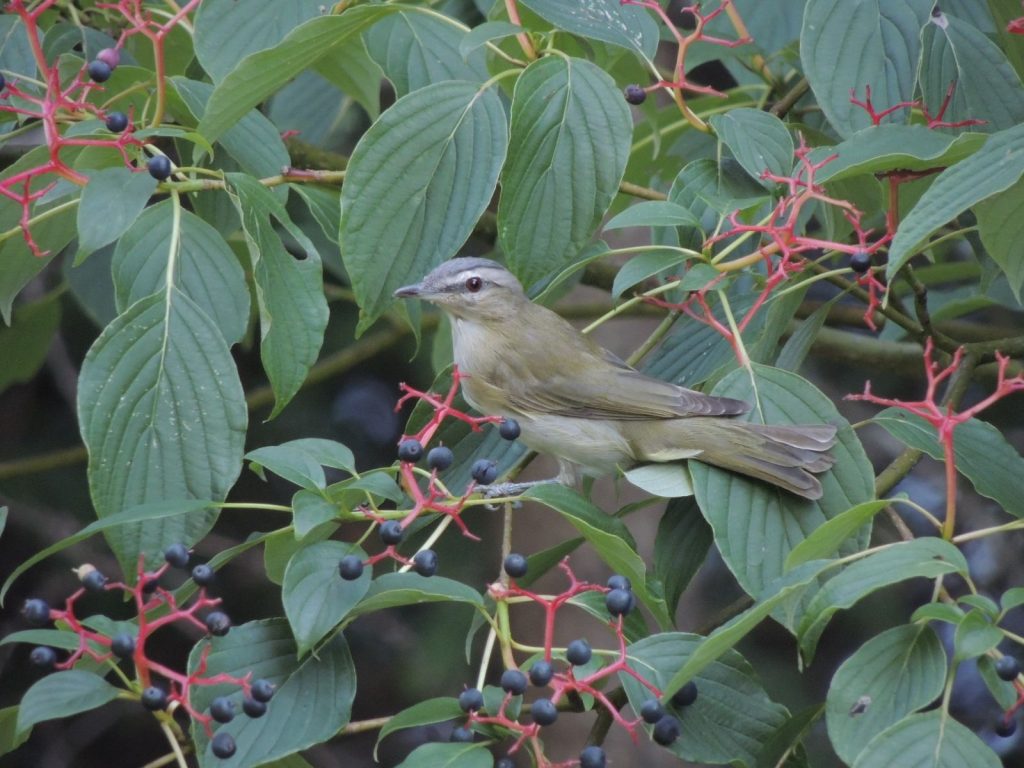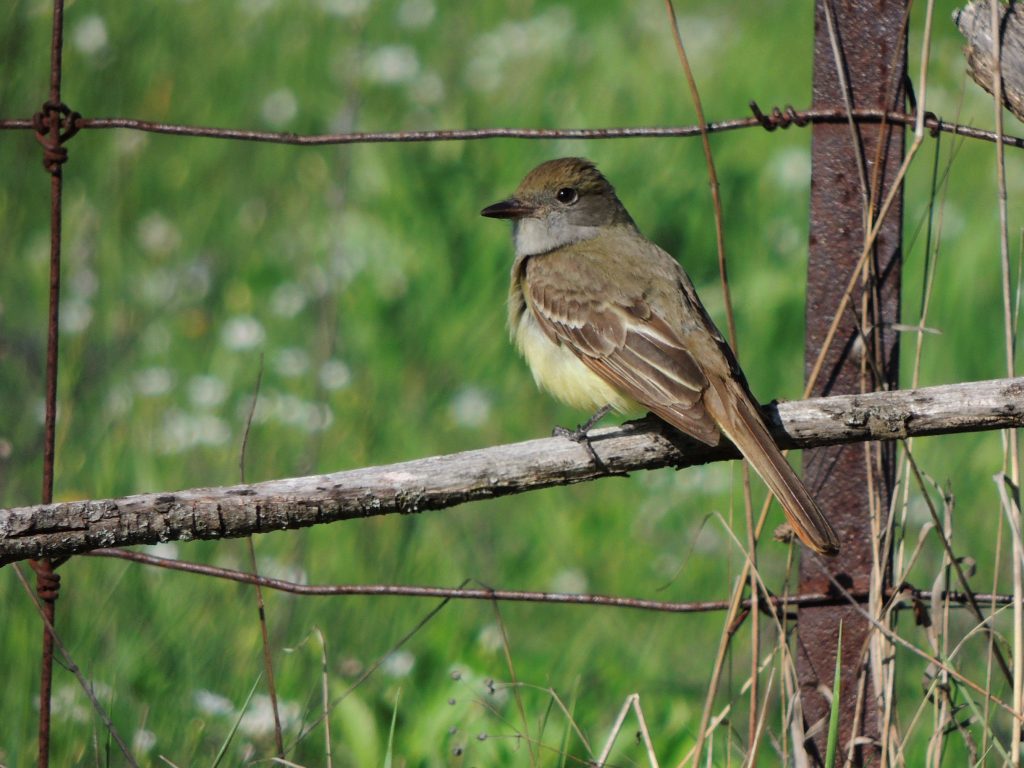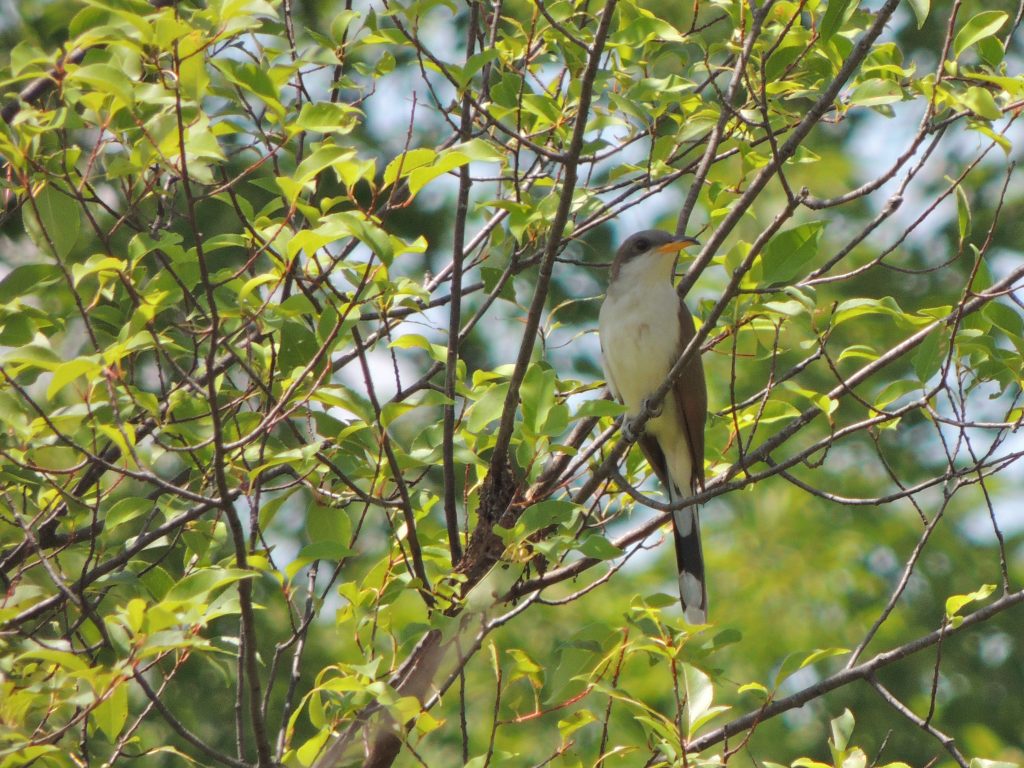June 8 2018, Churchill Park, Hamilton, ON. I should have taken my camera this morning. I remember as I was leaving home at 4.30, in the last shades of night, I paused as my hand reached for my camera. Should I? I thought. No, we’ll be too busy and they expect my undivided attention to focus on our task; I should have taken it.
Three of us had six forest-edge stations to visit as part of a breeding bird study. Our task was to listen and look (as leaf conditions allowed) for breeding birds. Each station was a short, if rugged, hike in and for a couple of hours my body and mind were dragging. It wasn’t until the third or fourth station visit that all the bits were in harmony, and then I was only hungry.
The first couple of stops were unremarkable except for our collective not-yet-awake bone weariness and distaste at the prospect of picking up a tick or two as we brushed through the forest grasses. Our bird list included among others Carolina Wrens, Eastern Wood Peewees, Red-eyed Vireos, American Robins and Song Sparrows; pretty much what we’d expected .

At our third forested station, not far from a large playing field where early- risers ran dogs of all sizes, we settled for five minutes quiet time before starting our listening. A Red-eyed Vireo came close enough for us to admire its elegance and we could see it was carrying something in its beak, at first I thought it must be food for nestlings, but then it ducked into a cluster of overlaying hickory leaves and started to apply whatever it was to a half-constructed nest. It all came back to me: Red-eyed Vireos make a pendulous nest slung between the branches of a forked twig. Working out from the narrowest part of the fork the nest is anchored with supports glued to the twigs with spiderweb silk. The nest is carried on the supports like a small basket and is smoothed and decorated. It was our privilege to be watching a stage in its construction. I have a soft spot for vireos at any time and this was special enough to make it Bird of the Day, camera or no camera.

Well some more good stuff was yet to come. As we completed our ten minutes of listening at this station a pair of Great-crested Flycatchers flew in to investigate an old decaying tree looking for a suitable nest cavity. Again we were close witnesses to an important part of the bird’s reproductive cycle.

A little later at the head of a trail leading to our next stop, we heard the soft and repetitive gulping coos of a Yellow-billed Cuckoo. One of my colleagues commented that they’d heard one here a few days earlier but had had no luck seeing it. Actually her words were something like, “It could be anywhere. Where do they hang out?” “Right there!” I replied, pointing. It had fluttered out to an exposed branch and moved around in full view for a couple of minutes. Cuckoos have a way of moving, almost snake-like, ducking and relocating without seeming to move. They are an elegant, rather elongated bird, grayish brown above and white below. Not the sort of bird to look away from once you get it in your binocular view, you can never be sure you’ll see one again.
Our mornings work continued with three more stops and included Yellow-throated Vireos, a Tufted Titmouse or two and a possible Orchard Oriole. But by the time of the oriole we’d done enough and were happy to make our way to a local coffee shop. Then, for me it was time to go home and catch up on my sleep deficit, for the other two they had a workday to complete but expected to be heading home in the early afternoon.
Good that Carolina Wrens even further north made it through another tough winter. My pair get winter rations of mealworms & chopped peanuts- they are a constant concern to me in bitter weather.